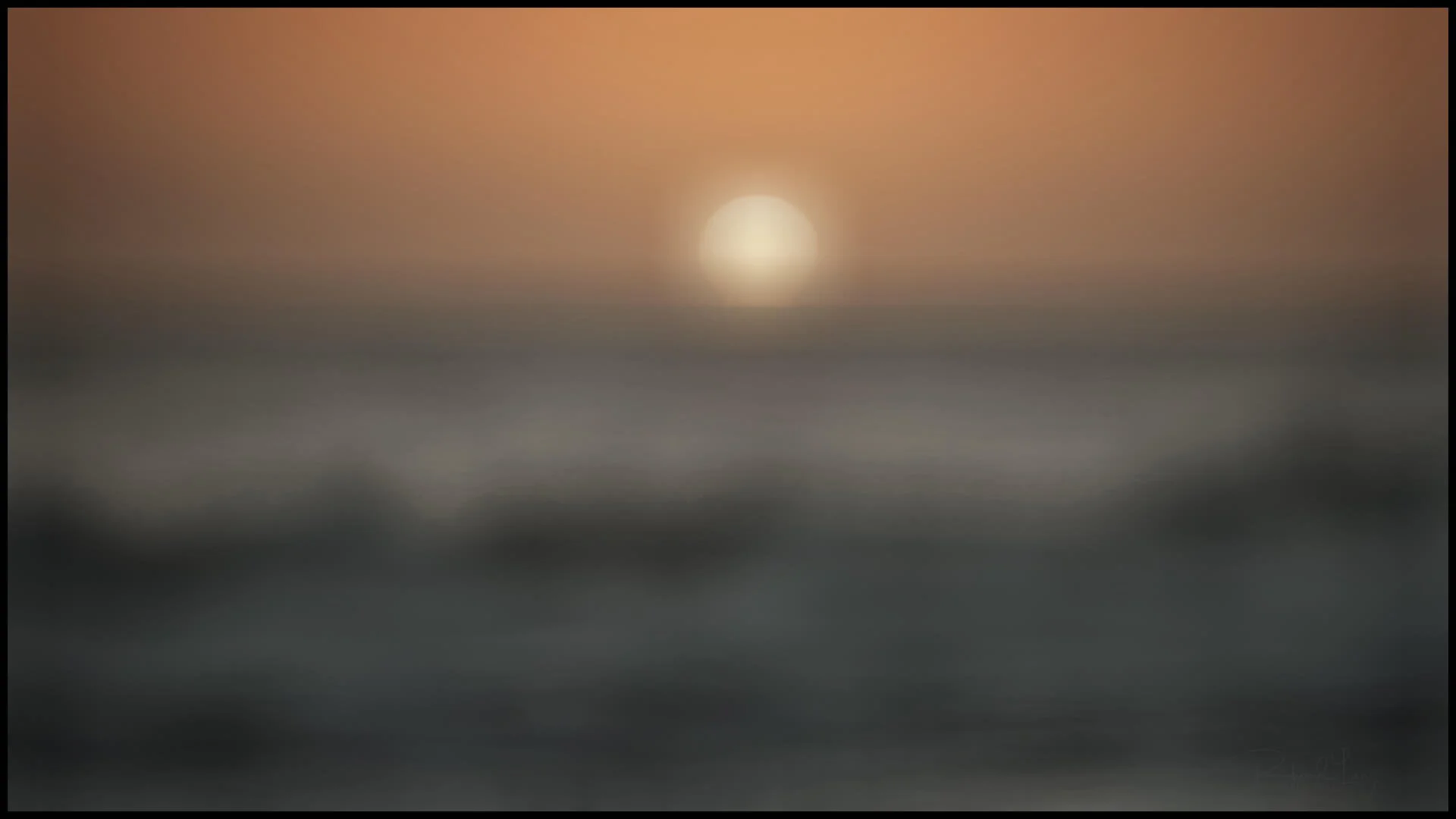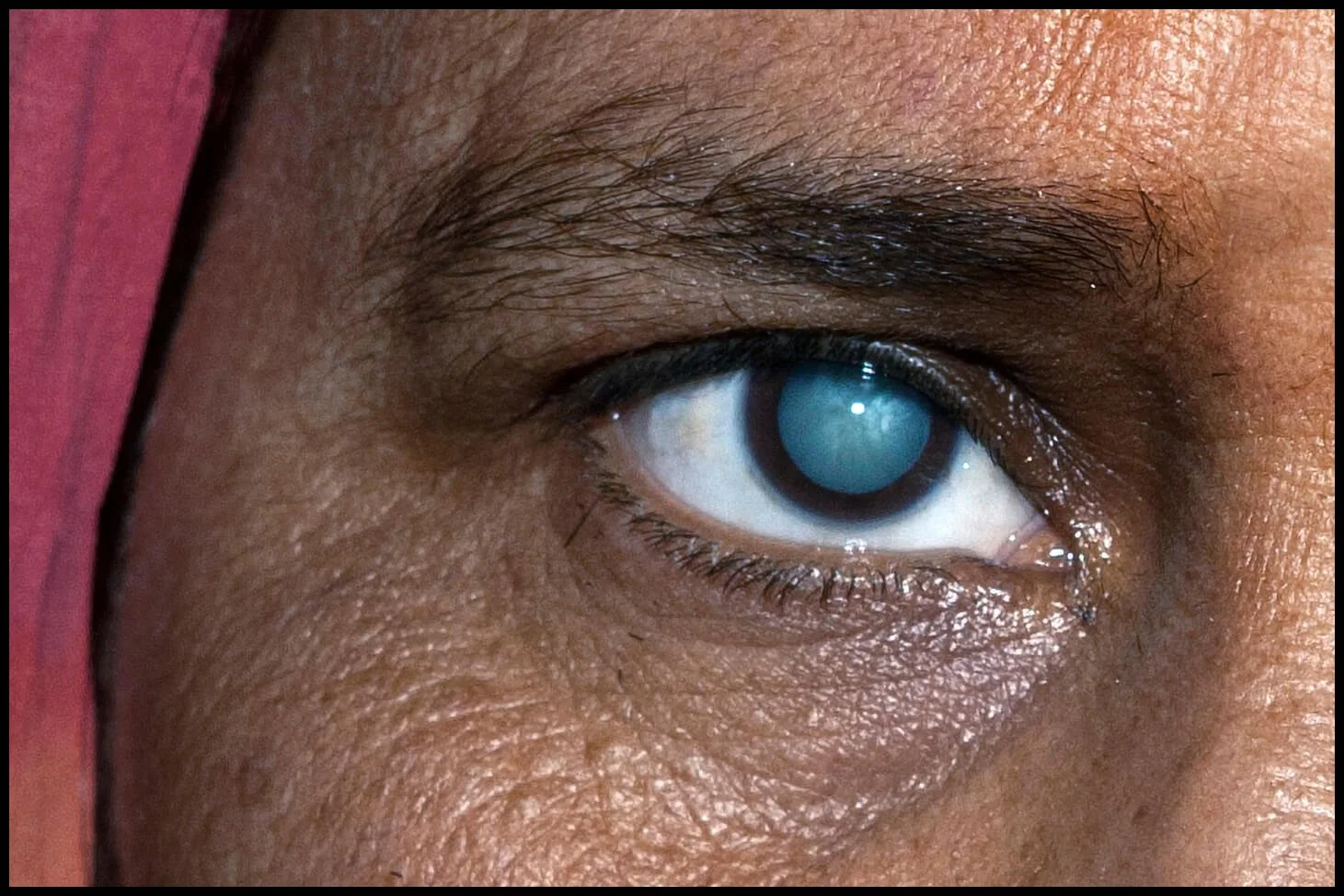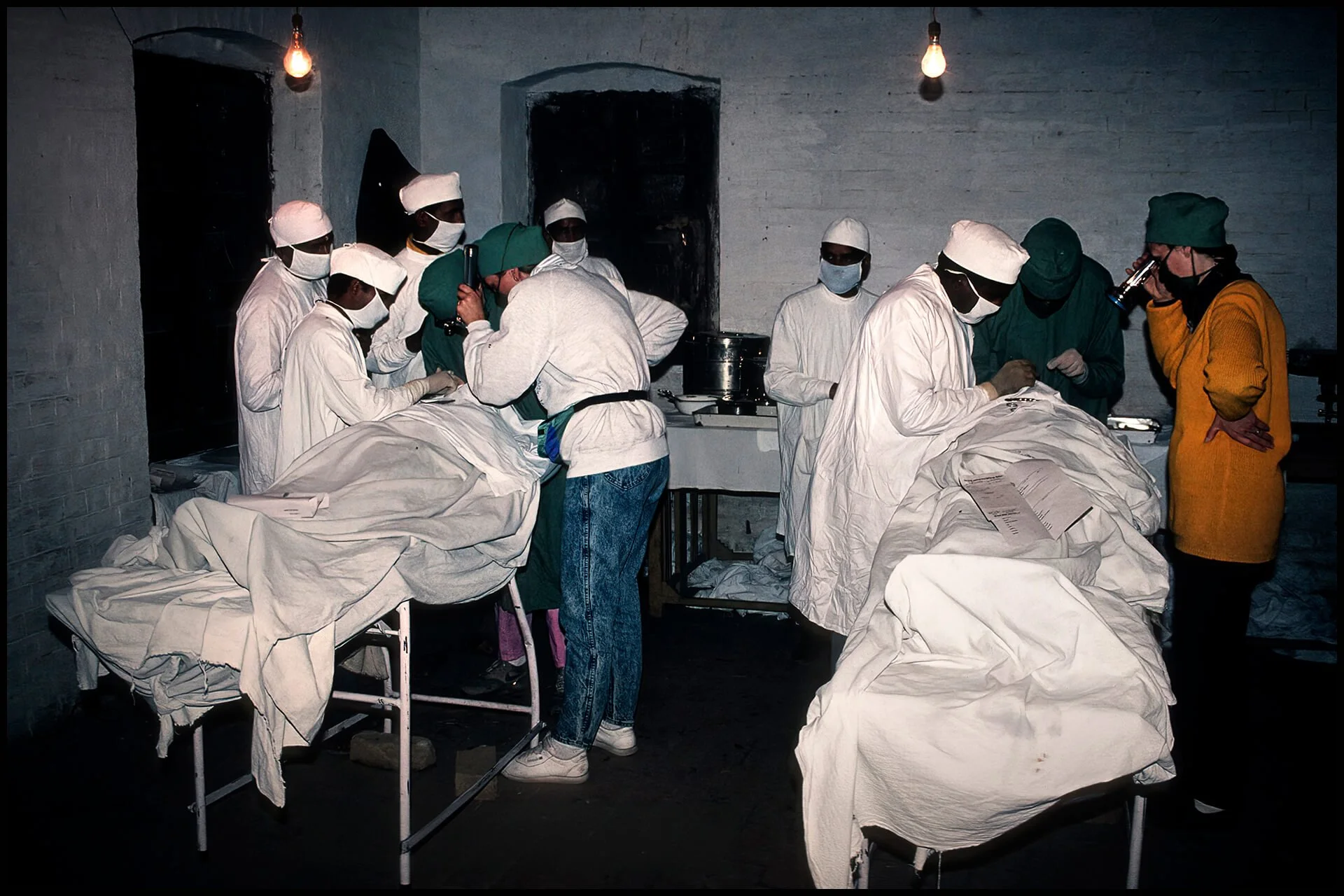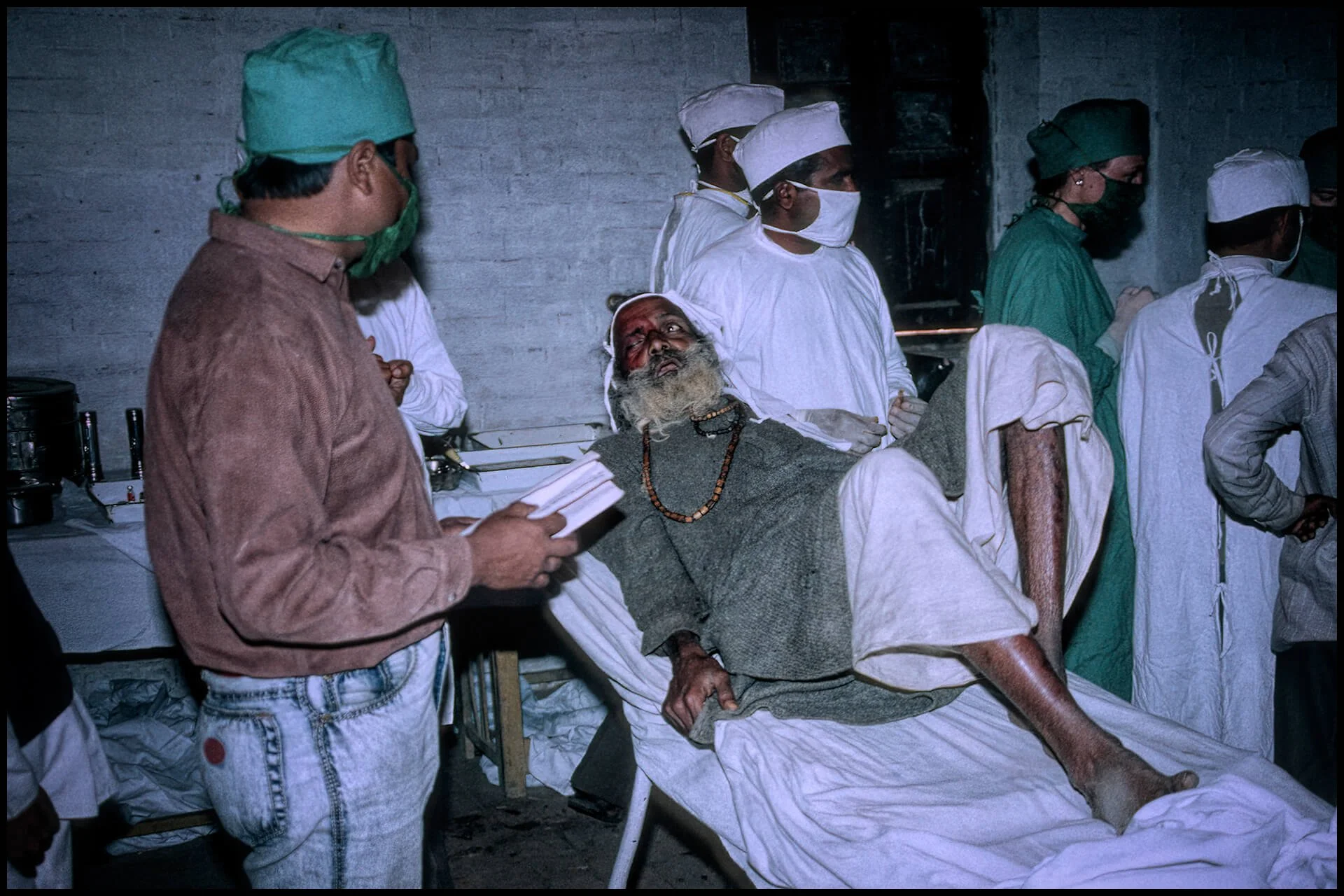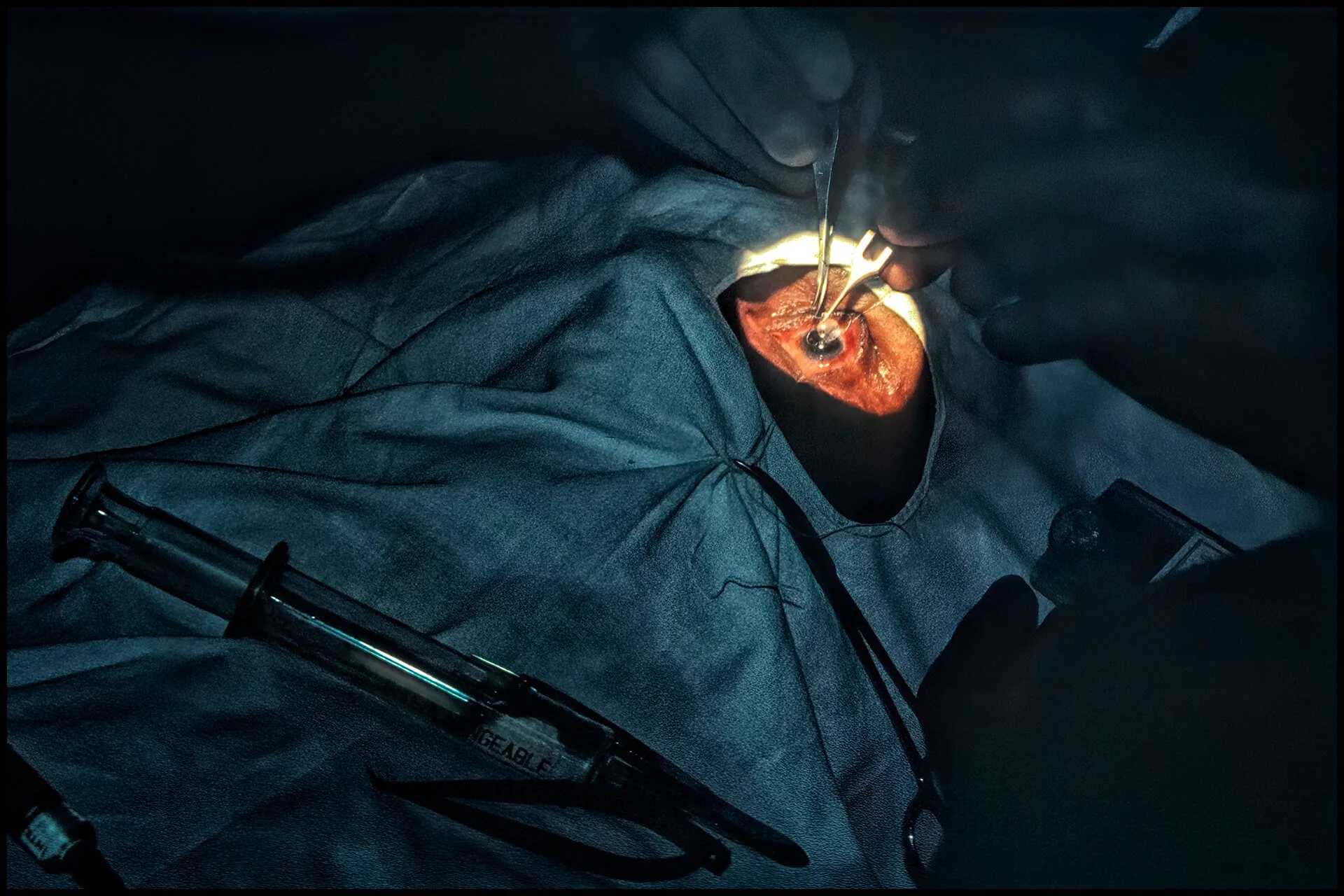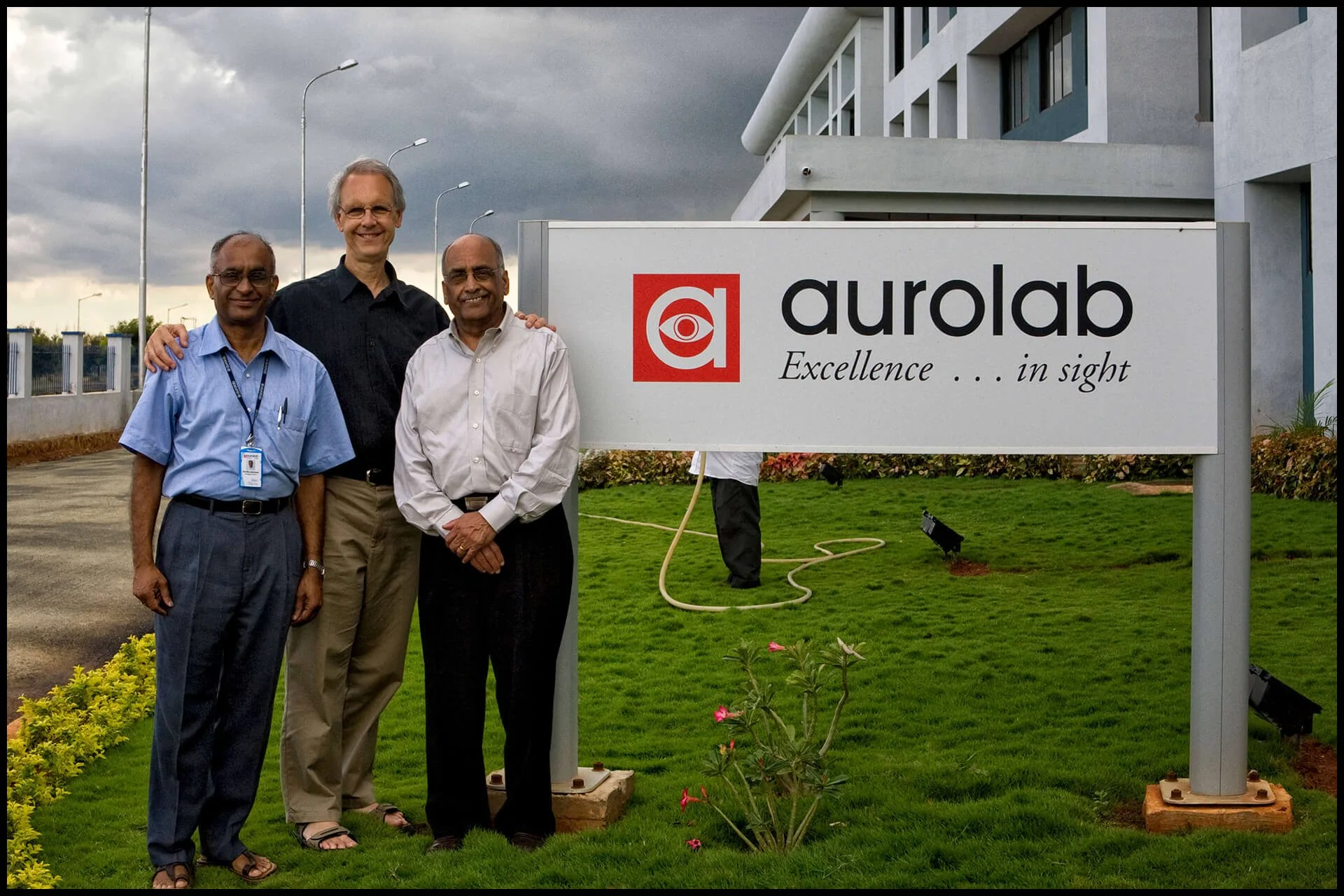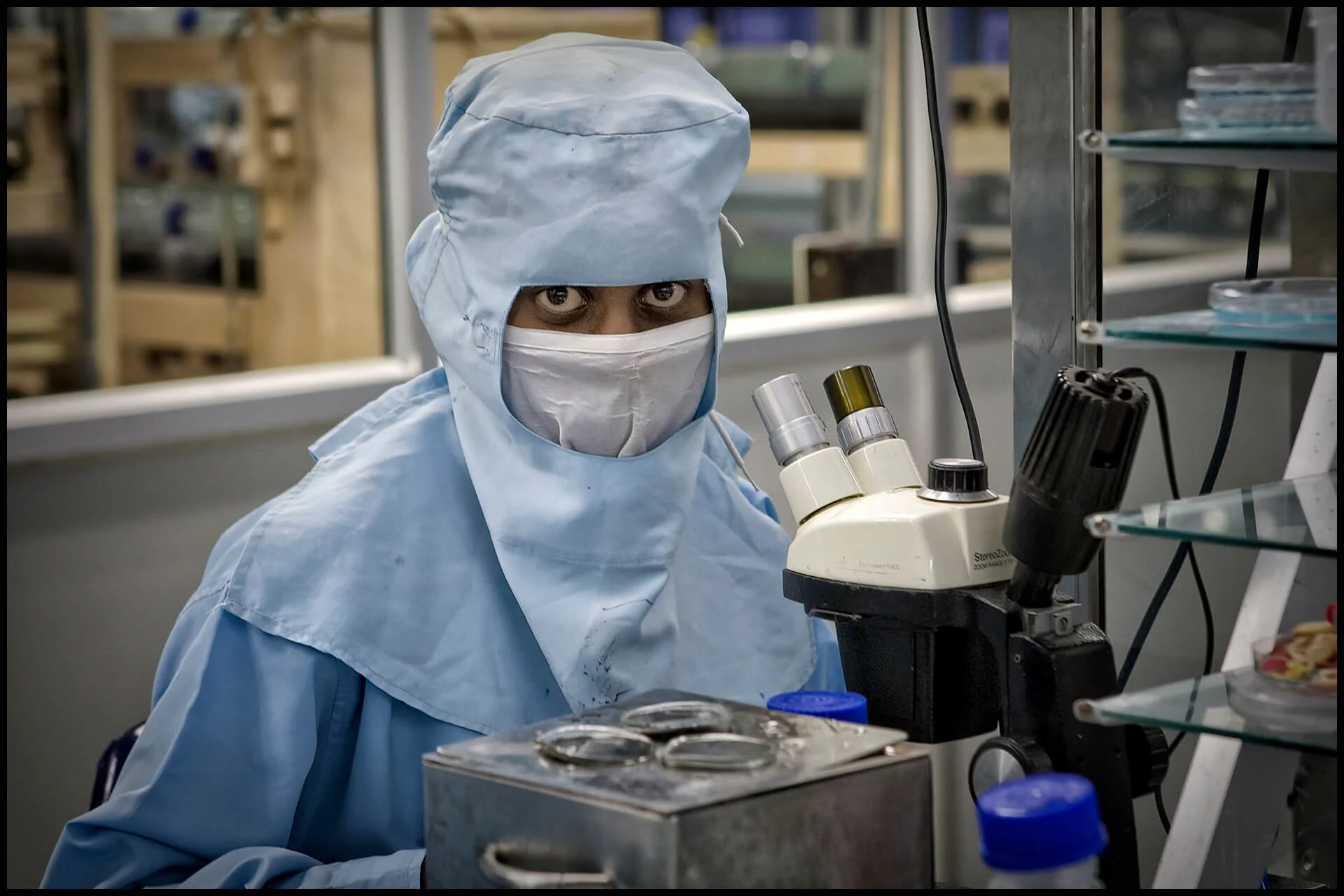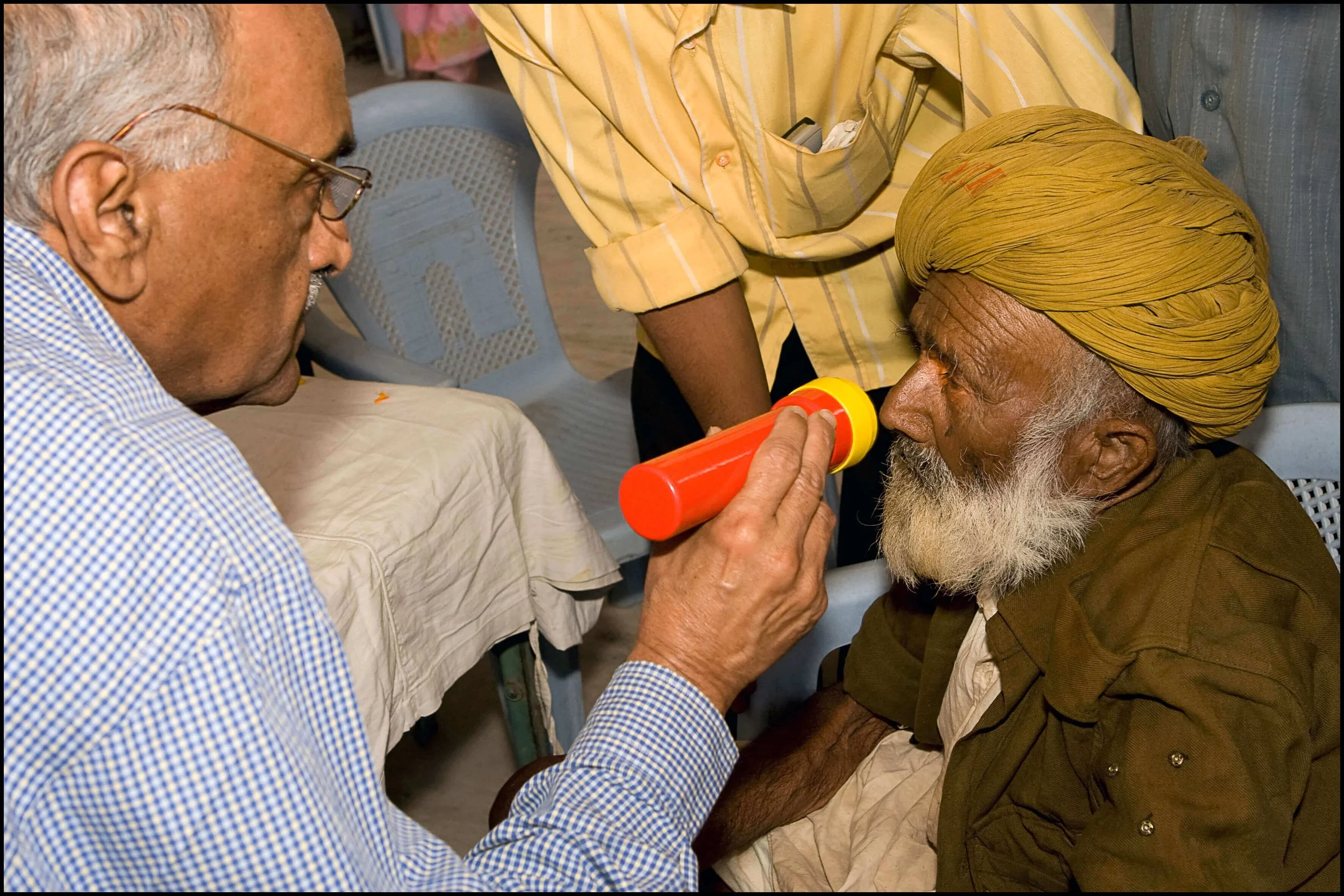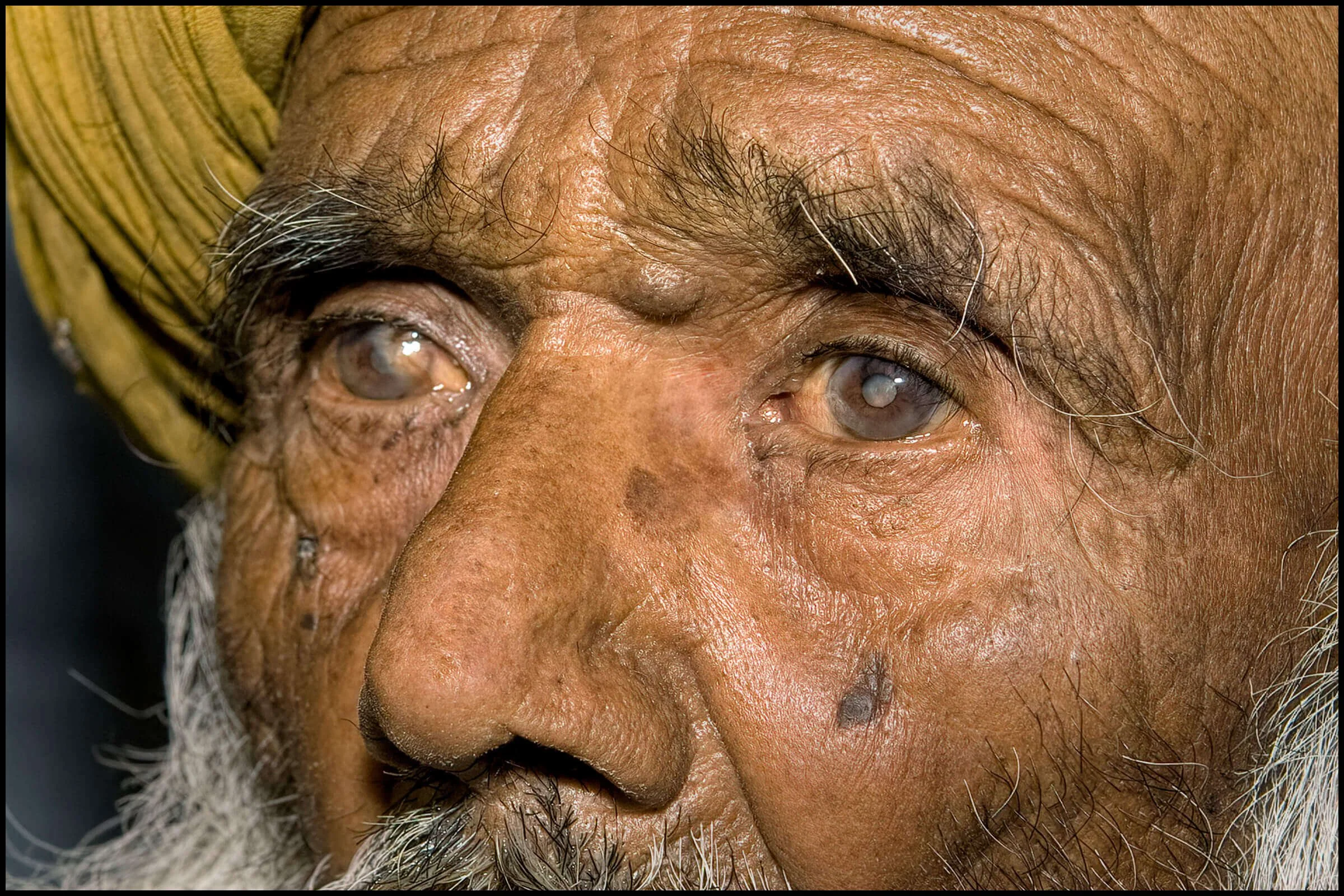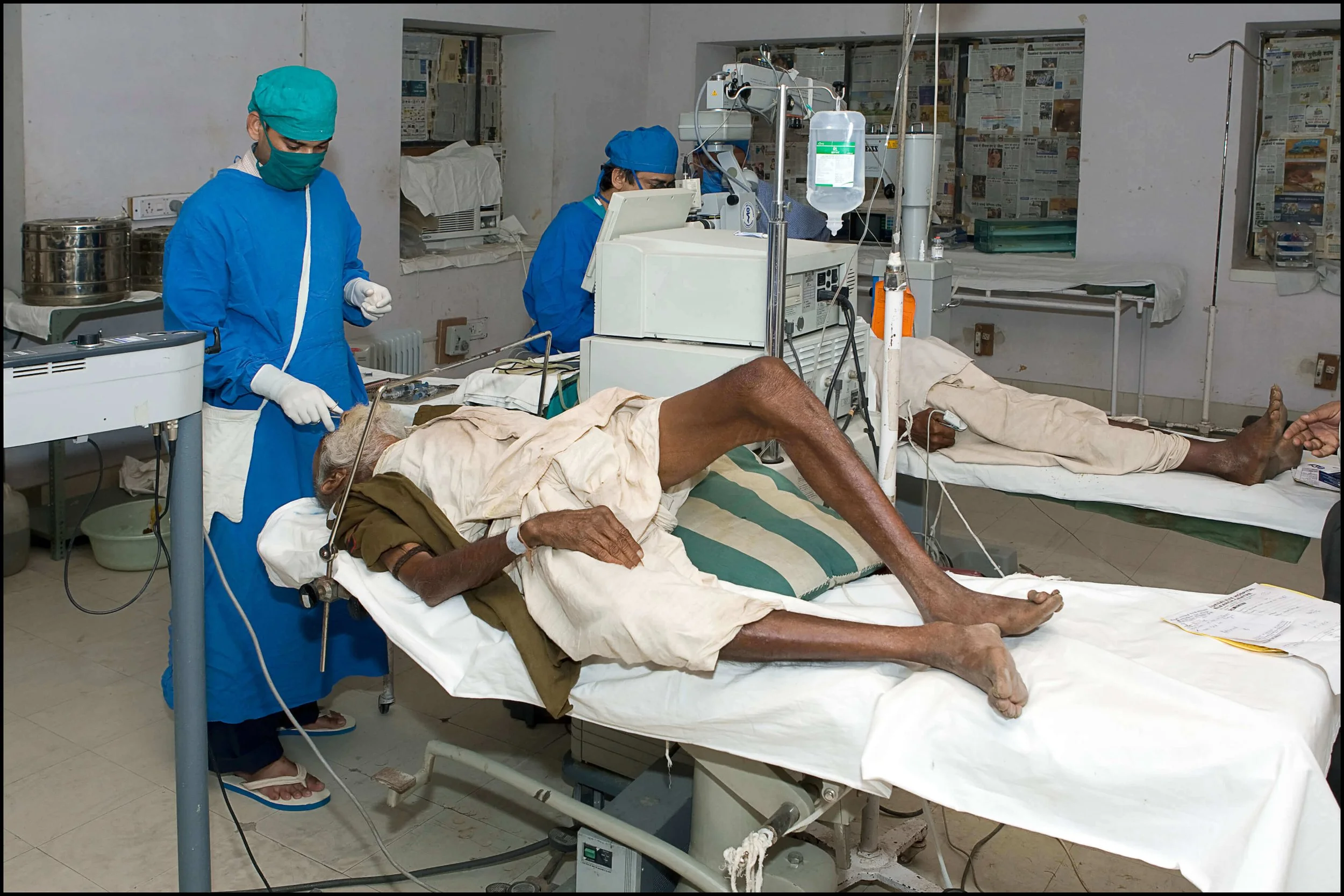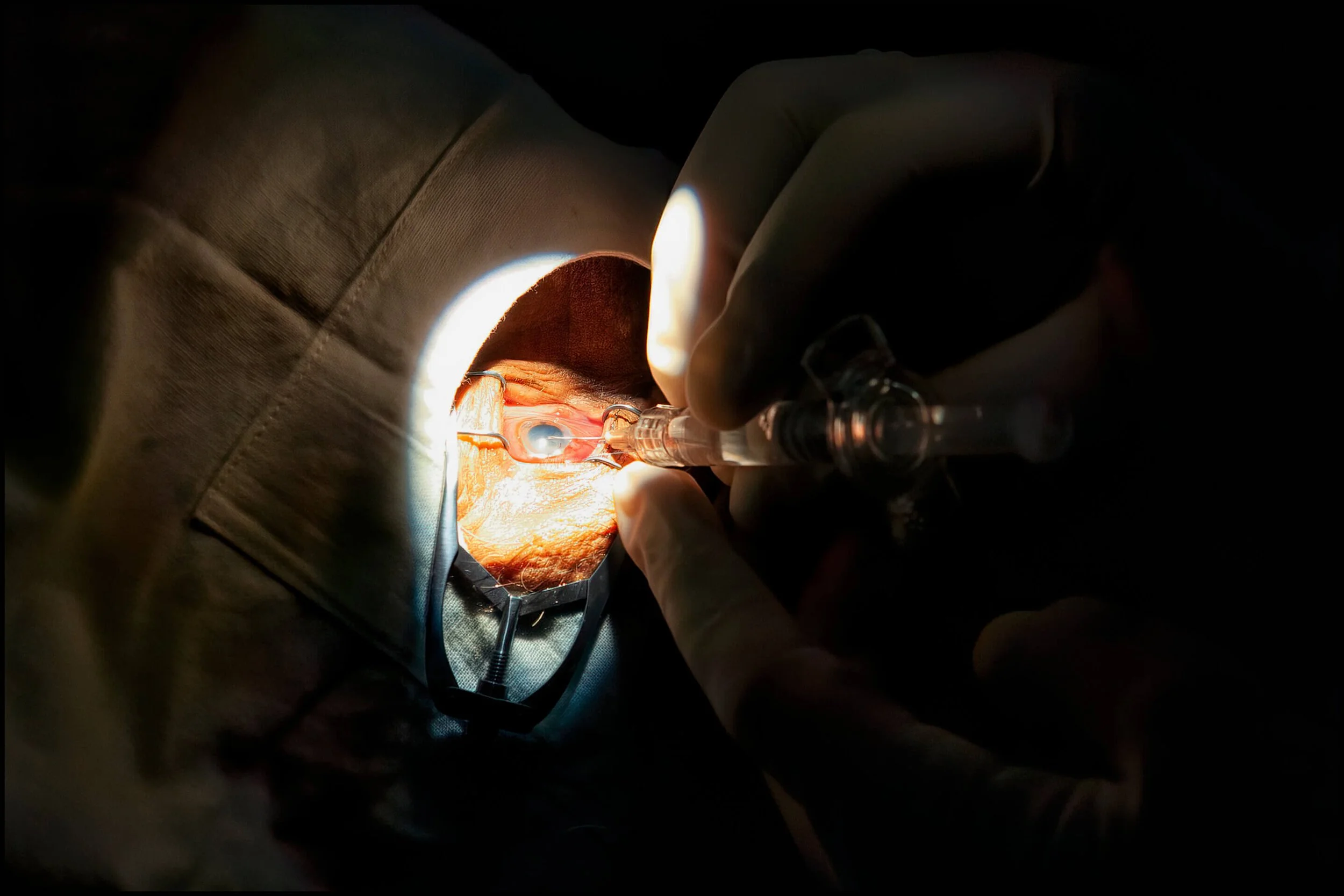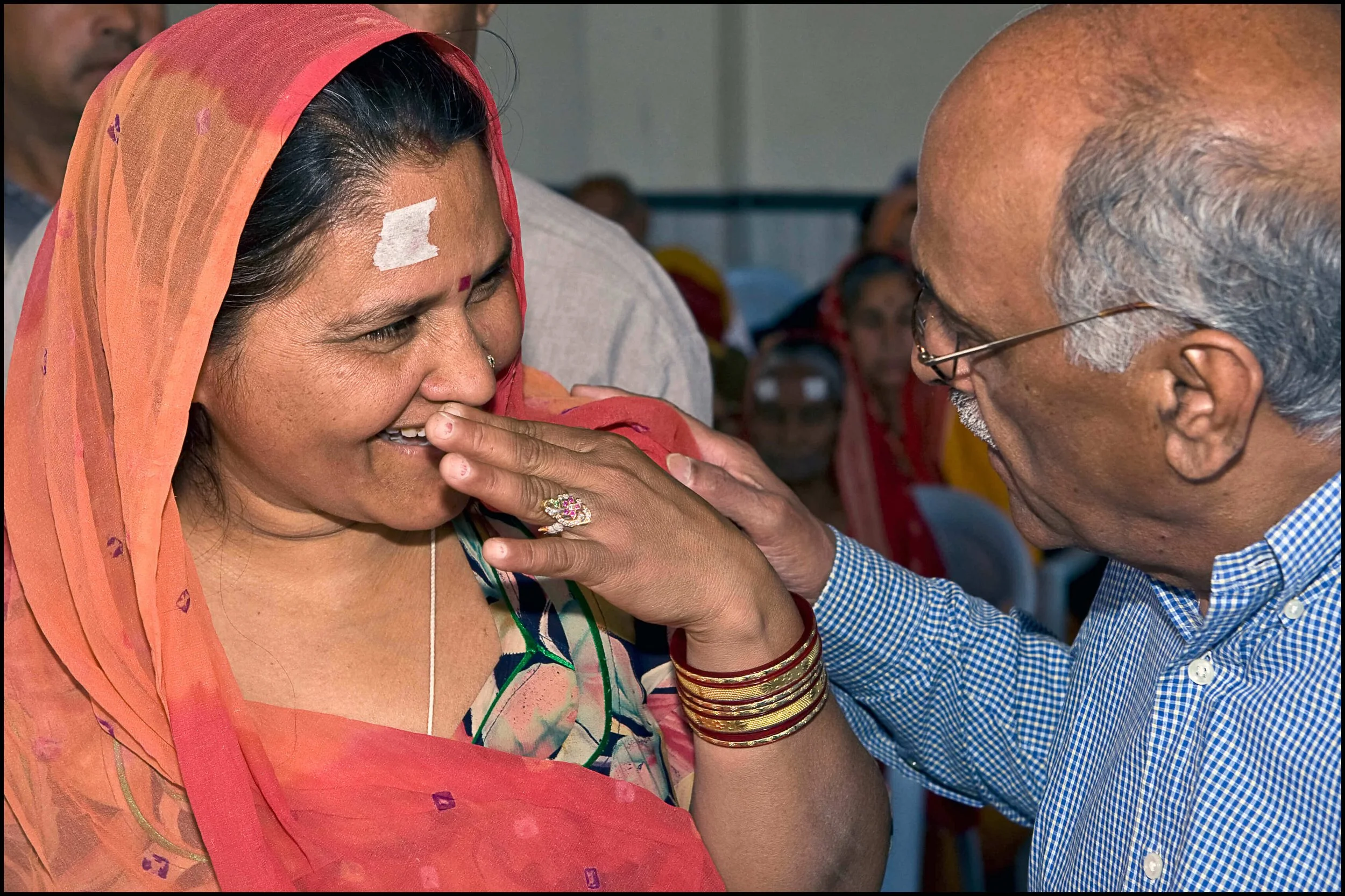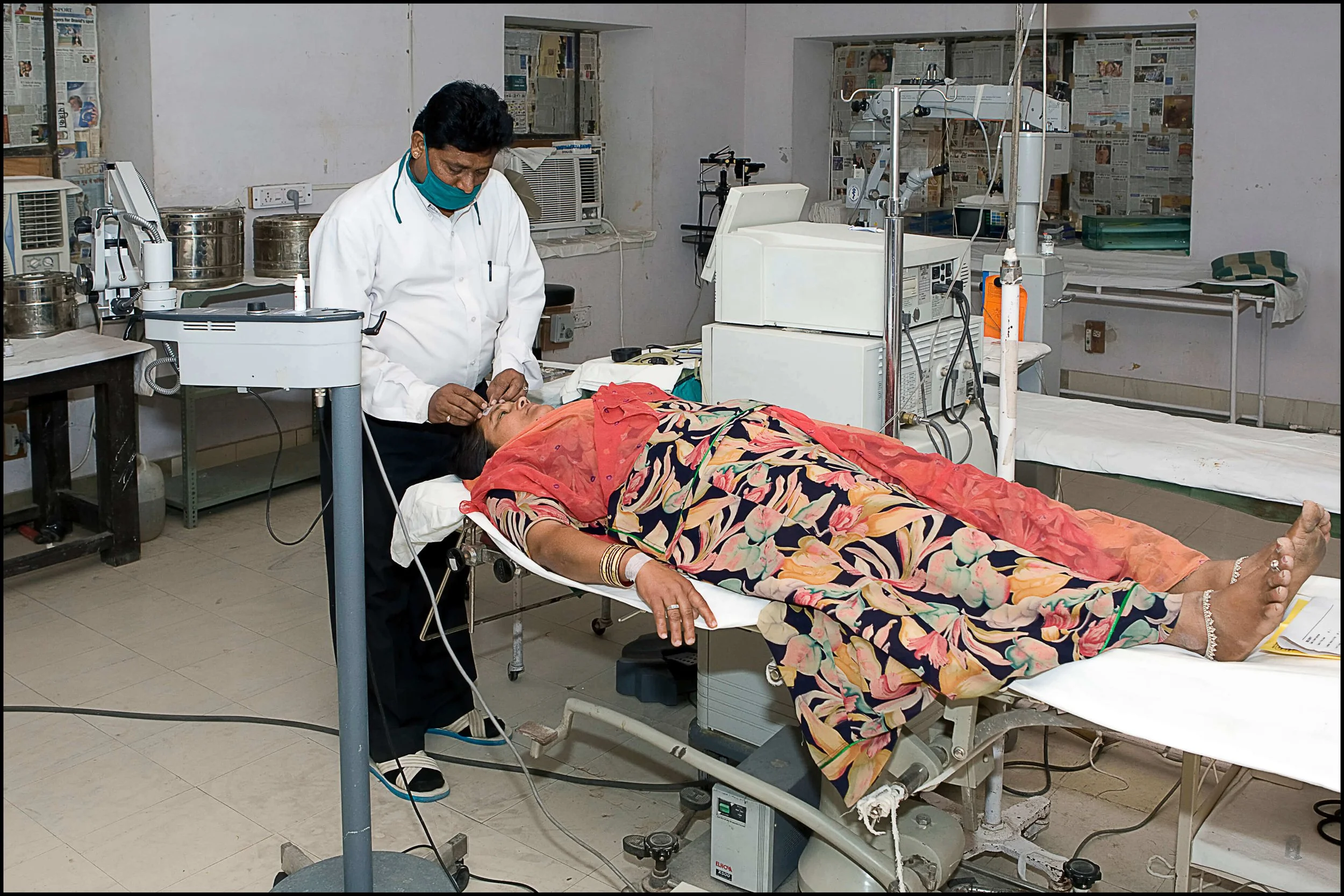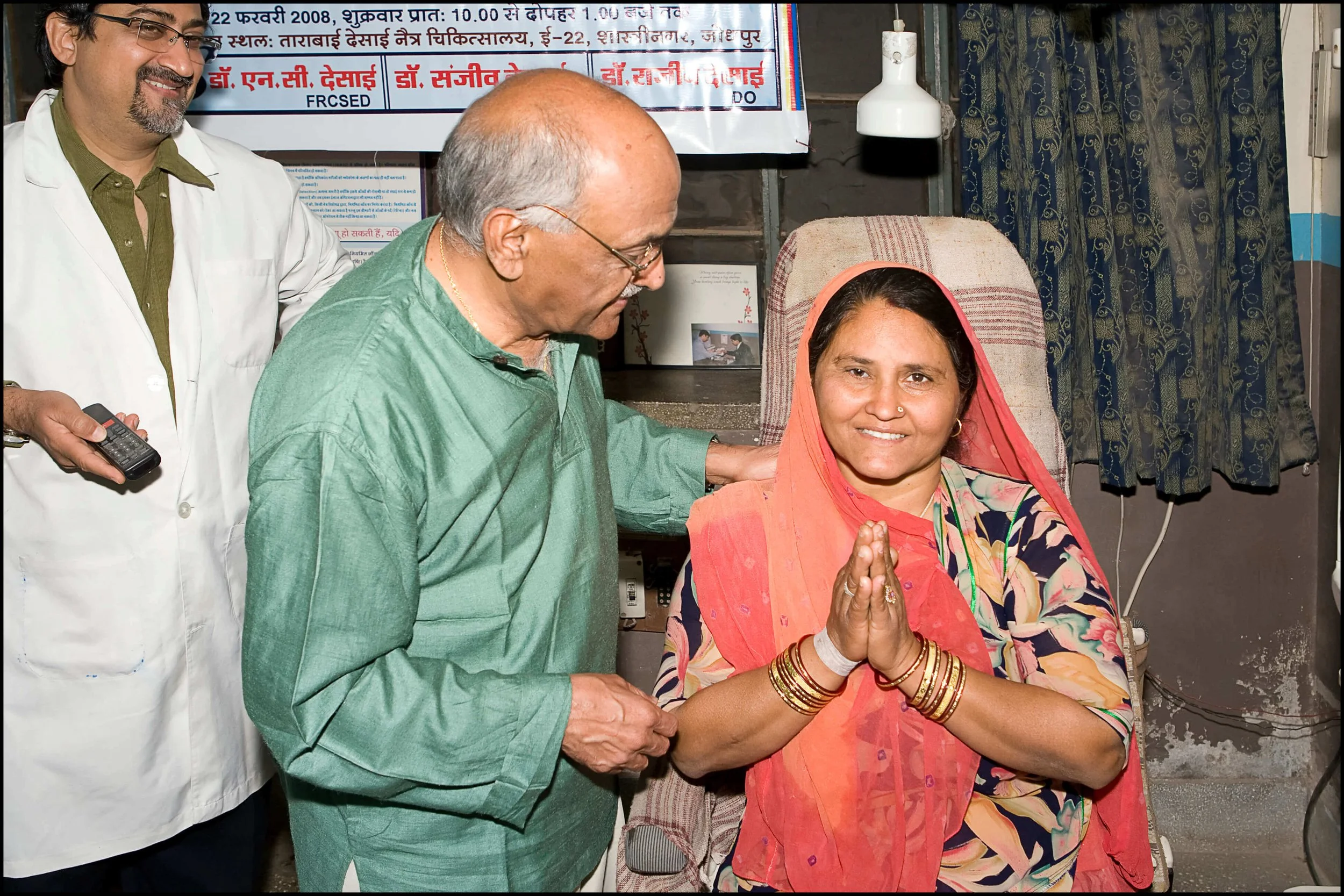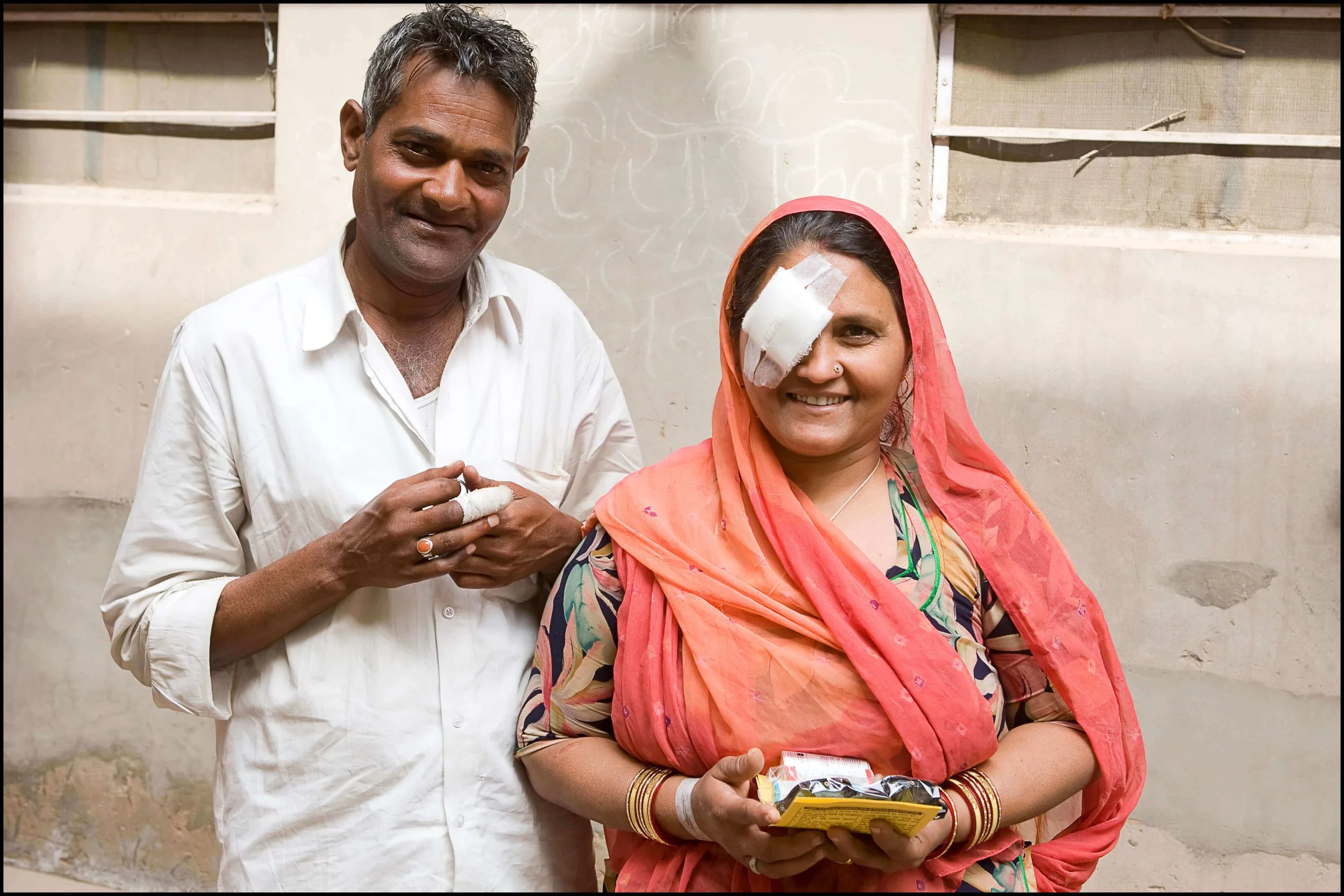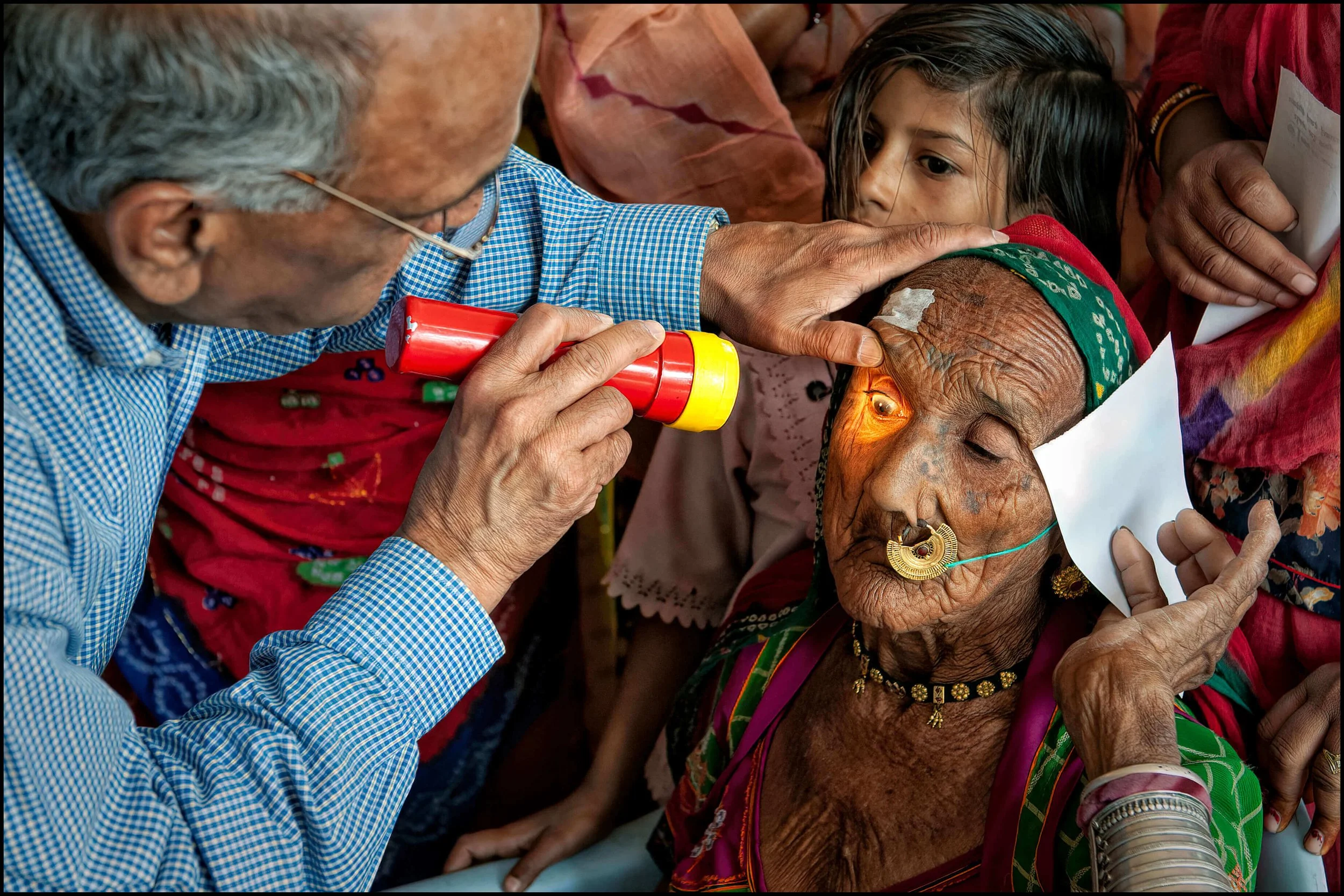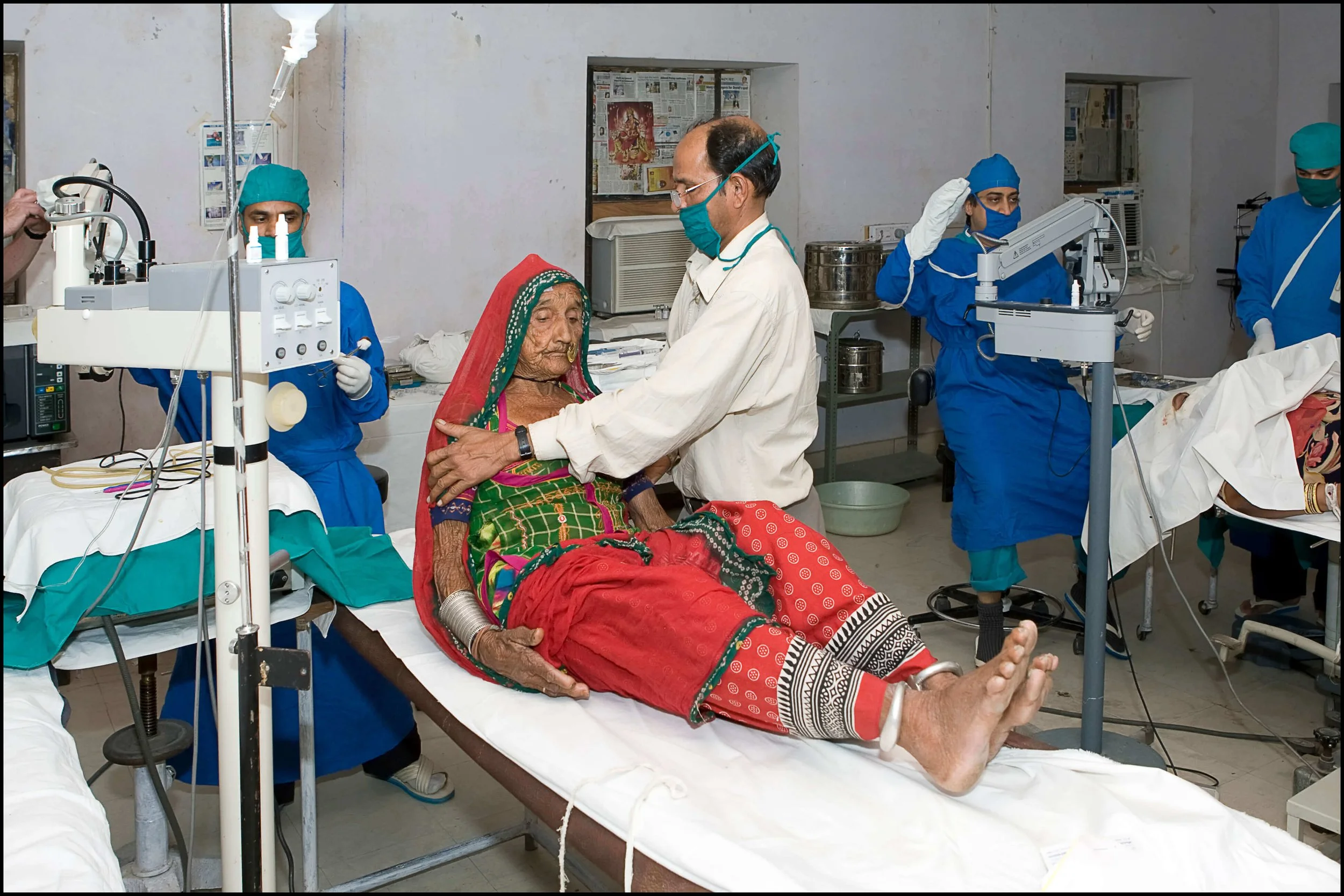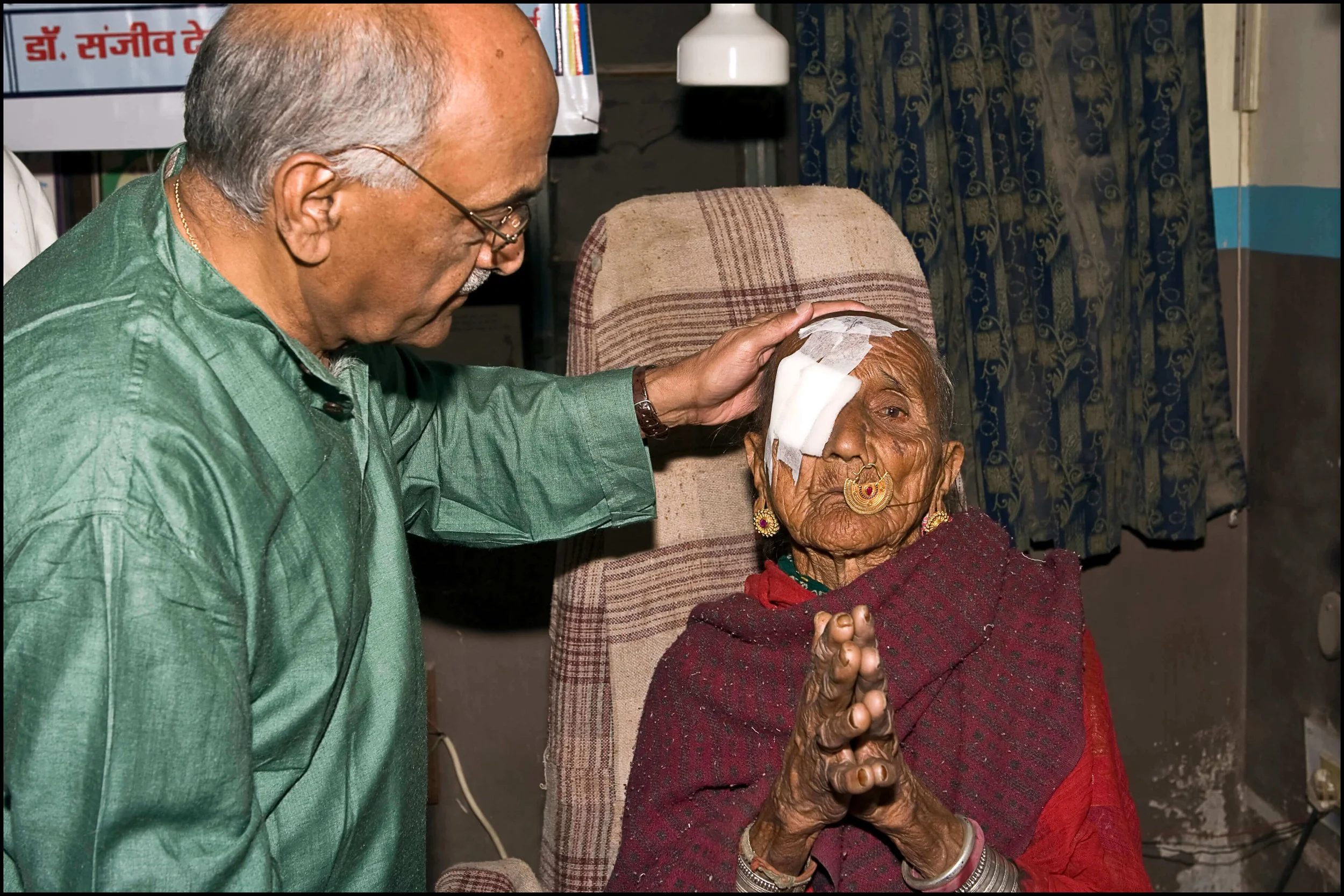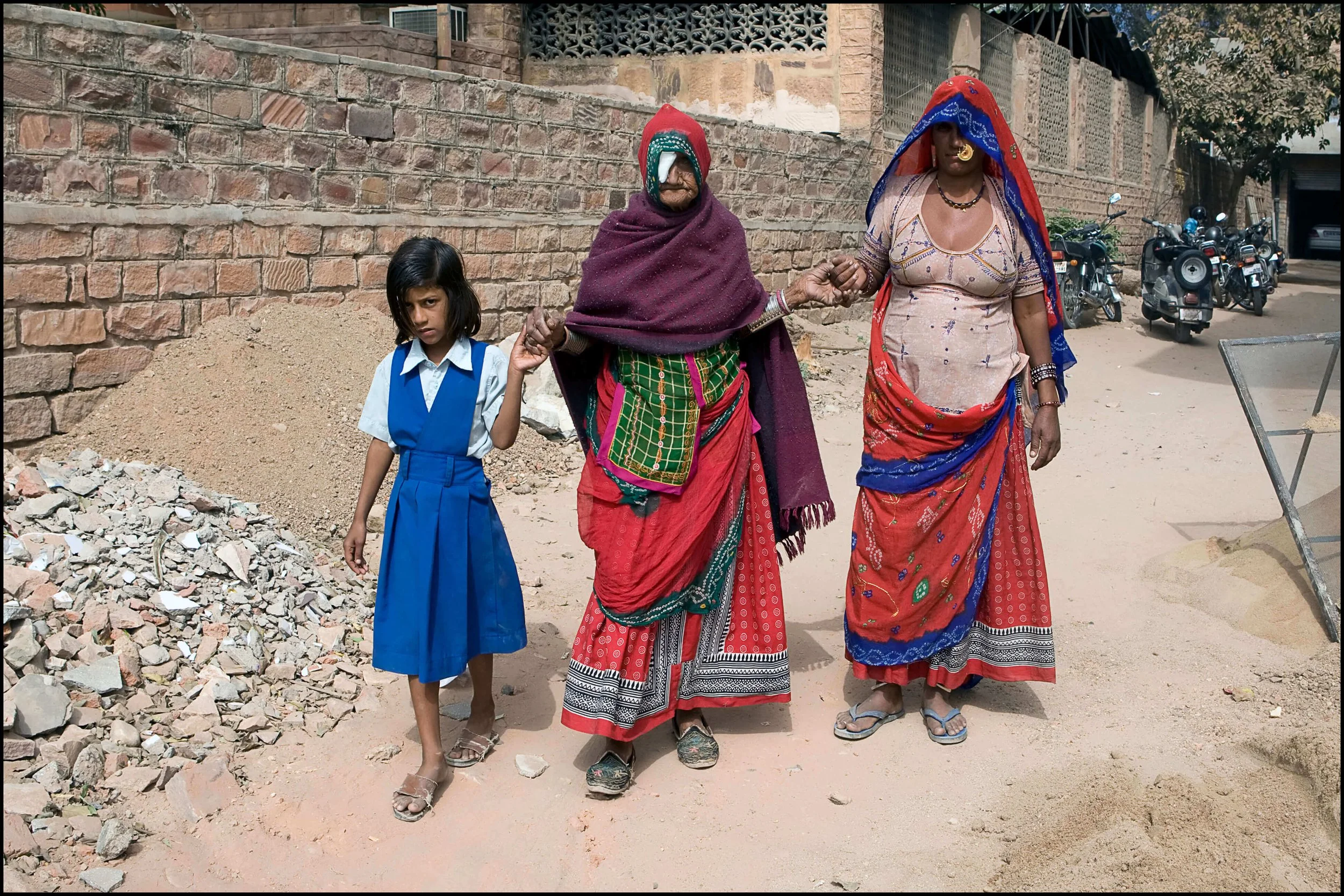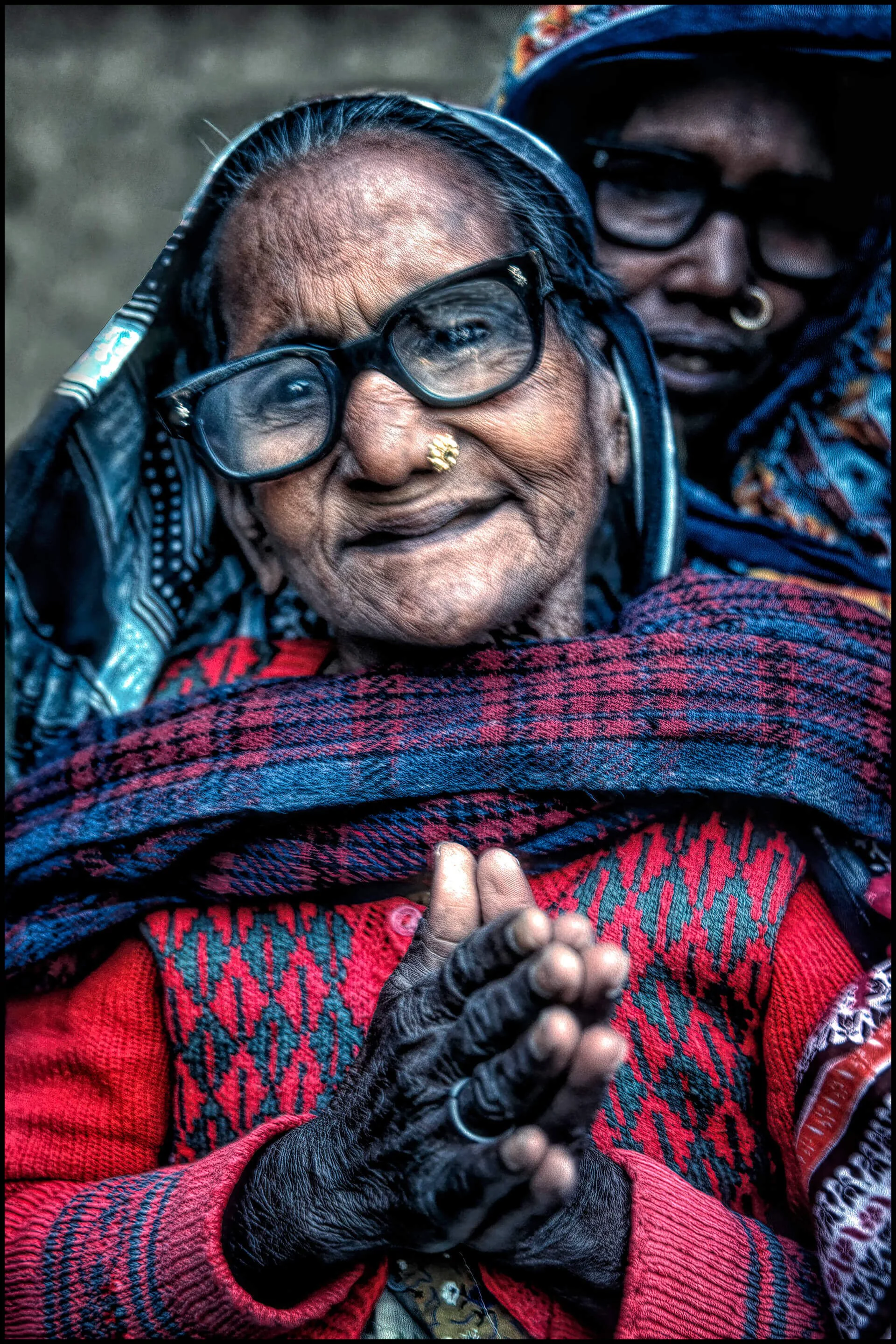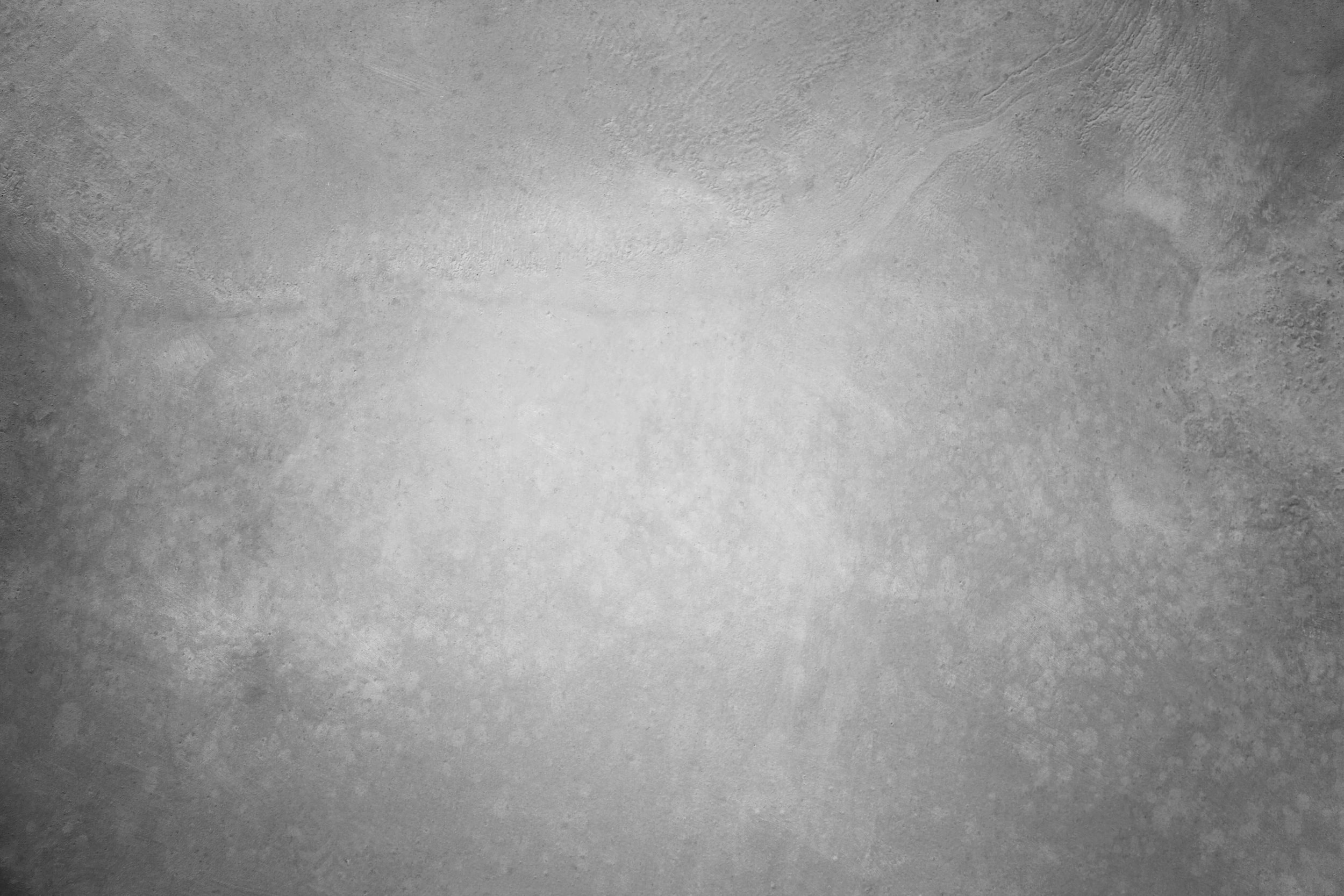

Imagine That You Are Going Blind
For the next 60 seconds, close your eyes to a tiny squint and look at the world around you through the squint.
Notice that objects appear cloudy, blurry, and dim, like you are looking at them through smudgy glass. Details and colors have become much more difficult to see.
Instead of a Hawaii sunset looking like this to you
It would look like this.
When you consult your eye doctor, he or she tells you that your loss of vision is due to cataracts, which develop when the lens of your eye becomes clouded.
Your doctor tells you that over time, as the cataract progresses, your symptoms will worsen. You will start to feel like you're looking through thick smoke or frosted glass, making it hard to read text or recognize faces. If left untreated, your cataracts will continue to grow and eventually block most of the light entering your eye, ultimately leading to your total blindness.
Your eye doctor then tells you that there is a solution for your problem using surgery. Cataract surgery removes your clouded lens and replaces it with a clear artificial lens called an IOL. IOL is an abbreviation for intraocular lens, a permanent artificial lens that can be implanted in your eye to replace the diseased lens.
After surgery, your vision is restored.
But…… imagine that you are not living in a developed country, where cataract surgery is readily available.
Instead, you are living in a developing country, where it is much more difficult to be treated with cataract surgery. You learn that cataracts are the leading cause of blindness worldwide, affecting 100 million people. Nearly 50% of all blindness is caused by cataracts, with 90% occurring in low-income countries.
The good news is that this leading form of blindness can be cured with a simple 20-minute cataract surgery that can restore your vision within 24 hours and that costs $25.
The bad news is that this surgery is not available to everyone who needs it. There are simply not enough resources to treat everyone worldwide. So, although there is a simple surgical procedure that can cure your blindness, you may nonetheless remain blind because it is not available in your country.
AND HERE IS WHERE
COMBAT BLINDNESS INTERNATIONAL
COMES IN

Combat Blindness International-- The Early Years
Combat Blindness International was founded in 1984 by Dr. Suresh Chandra, a world-renowned retinal surgeon who practiced in the Department of Ophthalmology at the University of Wisconsin -- Madison.
Initially, CBI’s primary focus was to cure blindness caused by cataracts. As explained above, cataracts are a clouding of the lens in the eye making vision blurry. Ultimately, if left untreated, the patients become blind.
In conjunction with private eye hospitals in India, CBI established eye camps in rural India where patients could come and have their cataracts removed and be given eyeglasses with strong lenses to restore their vision, all at no cost to the patients.
The results of the cataract surgery were astounding. The patients could see again at a cost to CBI of $5 per patient. A $5 procedure that gave vision back to a patient who had been blind for years!
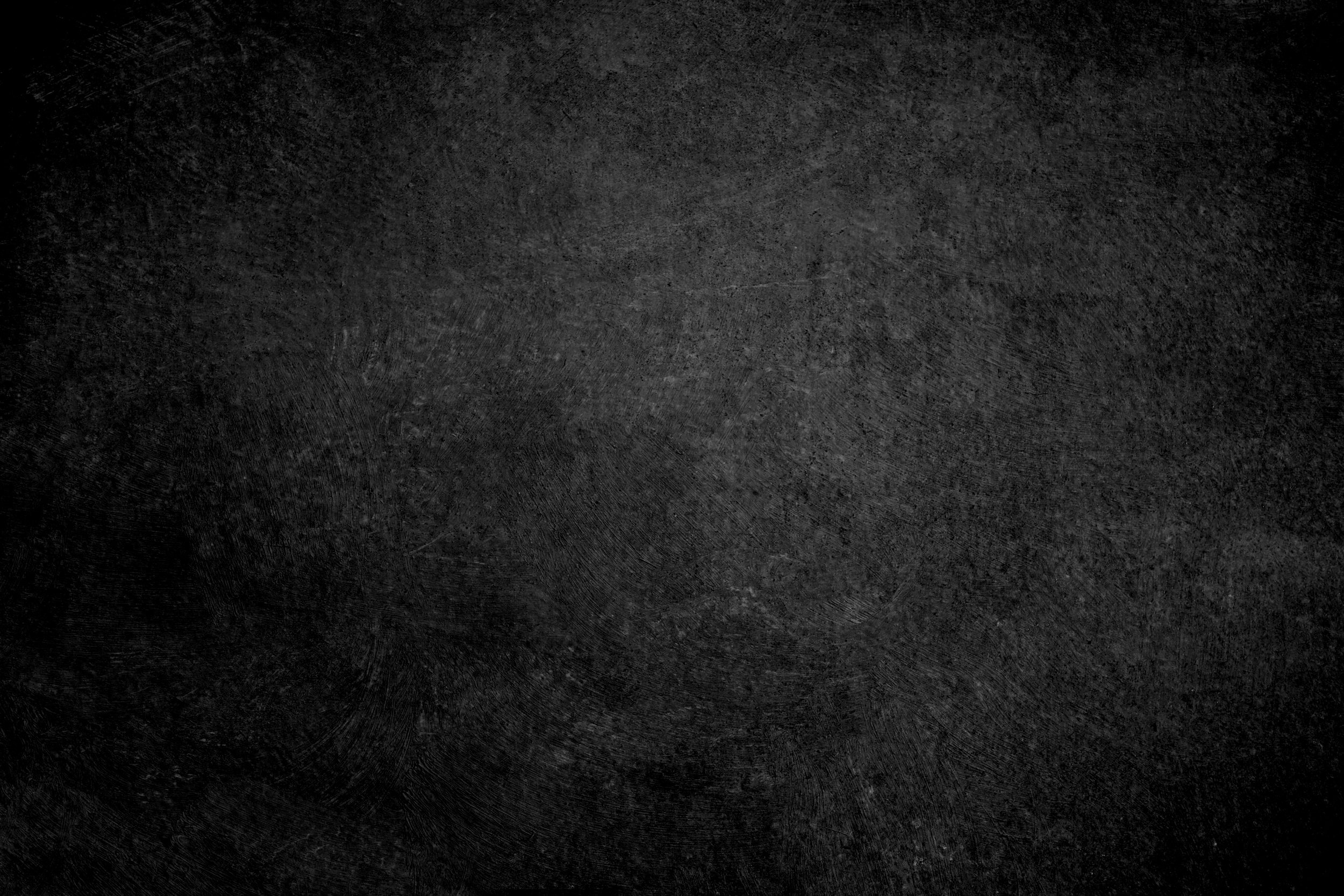
Visiting Rural India
Until my wife and I traveled to India to experience the process firsthand, we could scarcely believe this to be possible. But after having been hands-on in India, it is possible to cure cataract blindness. And it is an amazing experience to be with the patients when they can finally see again, often after years of cataract blindness.
The emotion of gratitude was everywhere, both on the part of the patients who could see again, and on us as we experienced their deep gratitude for our efforts.

The Operating Room
There were three operating theatres, all converted from their prior use as school rooms. Power was provided by portable generators and light was provided by over-head bulbs and flashlights.
After their surgery was completed, the patients went to a recovery tent for about 24 hours, where they were supported principally by family members that had accompanied them to the eye camp.
Over a 3-day period, the volunteer physicians and technicians performed over 400 cataract surgeries.

Arjun
The patient’s name is Arjun. He had been blind for 3 years for lack of cataract surgery that cost $5 / patient and took 10 - 12 minutes to complete.

Combat Blindness International — Development of Intraocular Lenses
When CBI started treating cataract blindness, it would remove the cloudy lens and replace it with eyeglasses with strong lenses that could focus the light on the patient’s retina. This was far better than being blind, but not a perfect solution because the glasses could get broken or misplaced and the patient would again be unable to see.
The ideal solution to cataract blindness is the use of very small plastic lenses called interocular lenses that are inserted directly into the patient’s eye in replacement of the cloudy cataract. The problem was that the medical companies manufacturing the lens charged a very high price for them (hundreds of dollars) and non-profits like CBI and the Seva Foundation could not afford to purchase them in quantity at those prices.
The non-profits solved this problem by building a new manufacturing facility in Madurai, India call Aurolab. Aurolab developed the technology to manufacture the lenses in quantity for a few dollars each. At last, physicians and assistants could use the low cost interocular lenses instead of strong eyeglasses.
Today, Aurolab distributes its low-cost high-quality interocular lenses in developing countries around the world, providing sight to millions of people who had no alternative but to be blind due to their cataracts. Simply put, creating Aurolab was a remarkable achievement (see photos of the lenses being manufactured by Aurolab).

Combat Blindness International — 2008
In 2008 my wife and I visited India for the third time to work with CBI in curing preventable blindness. The experience was as amazing as our other trips, as we watched patient after patient receiving cataract surgery and then being able to see clearly again. We followed the patients from their initial screenings, to the preparation for surgery, to the surgery and then the next day the removal of the bandages. Because CBI was now using the new intraocular lenses from Aurolab, there was no need for thick eyeglasses. The gratitude of the patients was beyond words. Here are three of them:
Restoring Sight to Ram Singh
Restoring Sight to Ratan
Restoring Sight to Dhannidevi

Combat Blindness International -- Today, 40 Years Later
In a world where 1.1 billion people are blind or visually impaired, and where 43 million are blind, and where 90% of blindness and visual impairment is in low-income countries and is preventable, and where 50% of blindness is due to untreated cataracts, Combat Blindness International has accomplished the following since its inception in 1984:
• Worked in 19 countries where they have restored vision, including India, Kenya, Paraguay, Botswana, The Gambia, South Africa, Philippines, the United States. • Performed 4.87+ million vision screenings
• Screened 3,664,224 adults
• Screened 1,211,422 children
• Performed 430,000+ sight-restoring surgeries • Empowered 850+ women by technical training
• Distributed 426,000+ pairs of glasses
• Distributed $685,000+ in equipment and medication from 2005 to 2021
These results are extraordinary. If you are willing to make a contribution to CBI, or want to know more about them, please visit their website at www.combatblindness.org.
As stated by Dr. Suresh Chandra, the visionary founder of CBI: “At Combat Blindness International, we have always had a mission to reach the most vulnerable around the world – to bring eye care to those who have no resources.”




